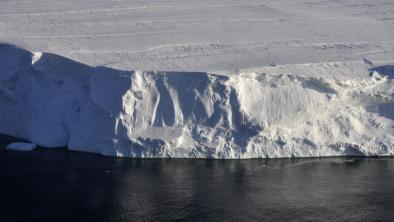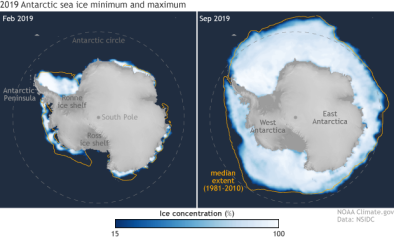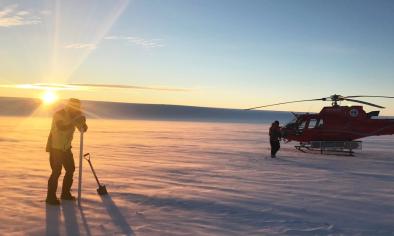Science Source
Ice-Shelf Melting Around Antarctica
- Compares the volume flux divergence of Antarctic ice shelves in 2007 and 2008 with 1979 to 2010 surface accumulation and 2003 to 2008 thinning to determine their rates of melting and mass balance
- Finds that basal melt of 1325 ± 235 gigatons per year (Gt/year) exceeds a calving flux of 1089 ± 139 Gt/year, making ice-shelf melting the largest ablation process in Antarctica
- Finds that the giant cold-cavity Ross, Filchner, and Ronne ice shelves covering two-thirds of the total ice-shelf area account for only 15% of net melting
- Results show that half of the meltwater comes from 10 small, warm-cavity Southeast Pacific ice shelves occupying 8% of the area
- Results show a similar high melt/area ratio for six East Antarctic ice shelves, implying undocumented strong ocean thermal forcing on their deep grounding lines
- Findings support the idea that melting by a warming ocean may also be an important factor in Antarctic mass loss
Related Content
Headline

Jan 29, 2020 | BBC News
Journey to the 'doomsday glacier'
Headline

Nov 22, 2019 | NOAA Climate.gov
Understanding climate: Antarctic sea ice extent
Headline

Mar 26, 2019 | The Guardian
Australian researchers find huge lakes beneath largest east Antarctic glacier
Science Source
| Geophysical Research Letters
Mass Loss of Totten and Moscow University Glaciers, East Antarctica, Using Regionally Optimized GRACE Mascons
Yara Mohajerani, Isabella Velicogna, Eric Rignot


